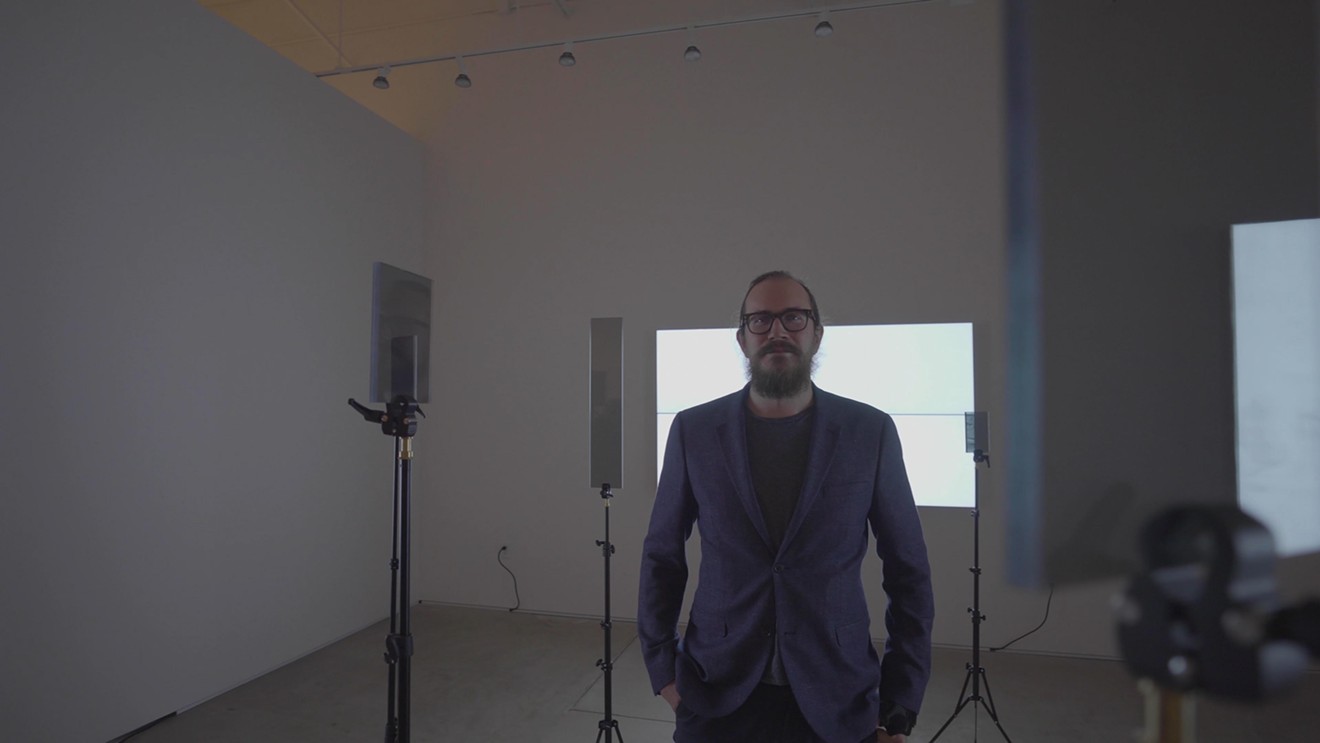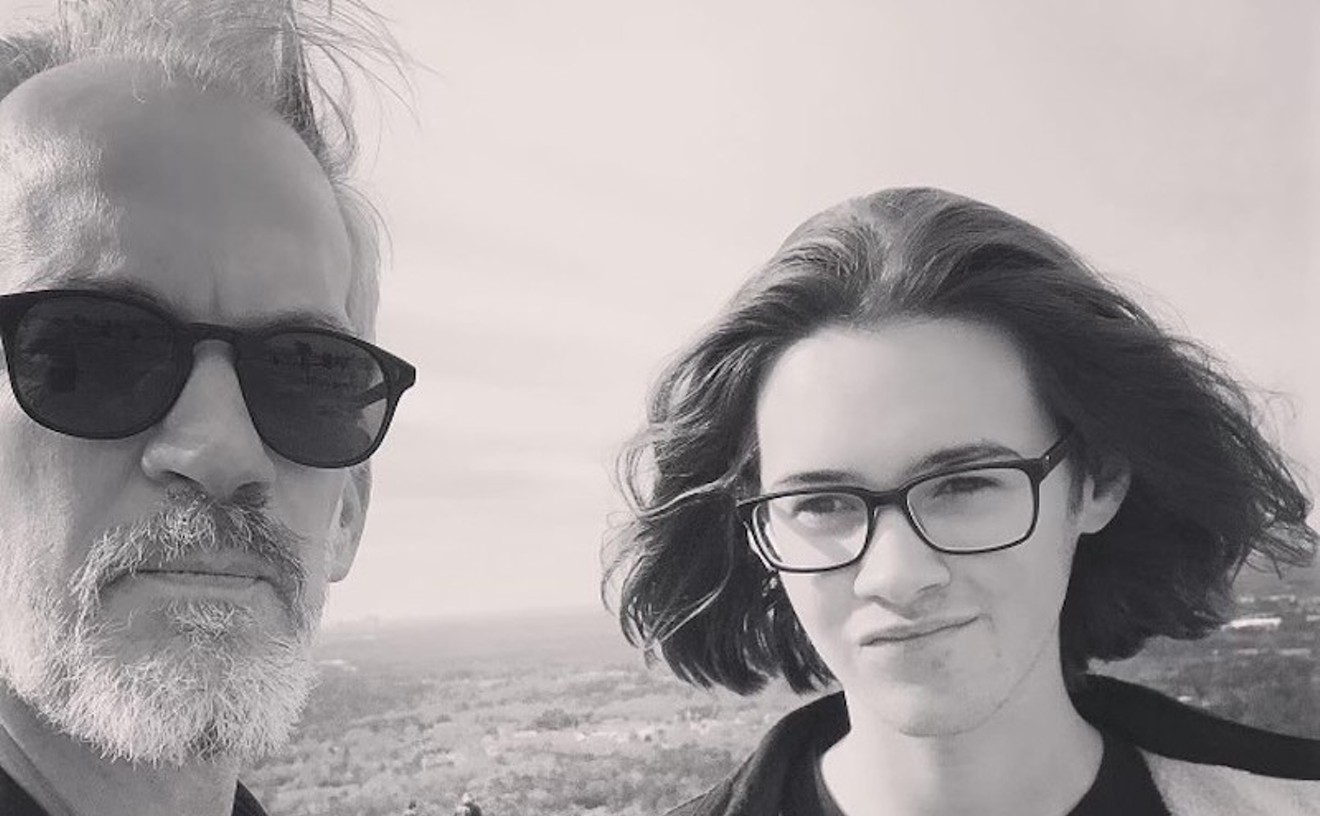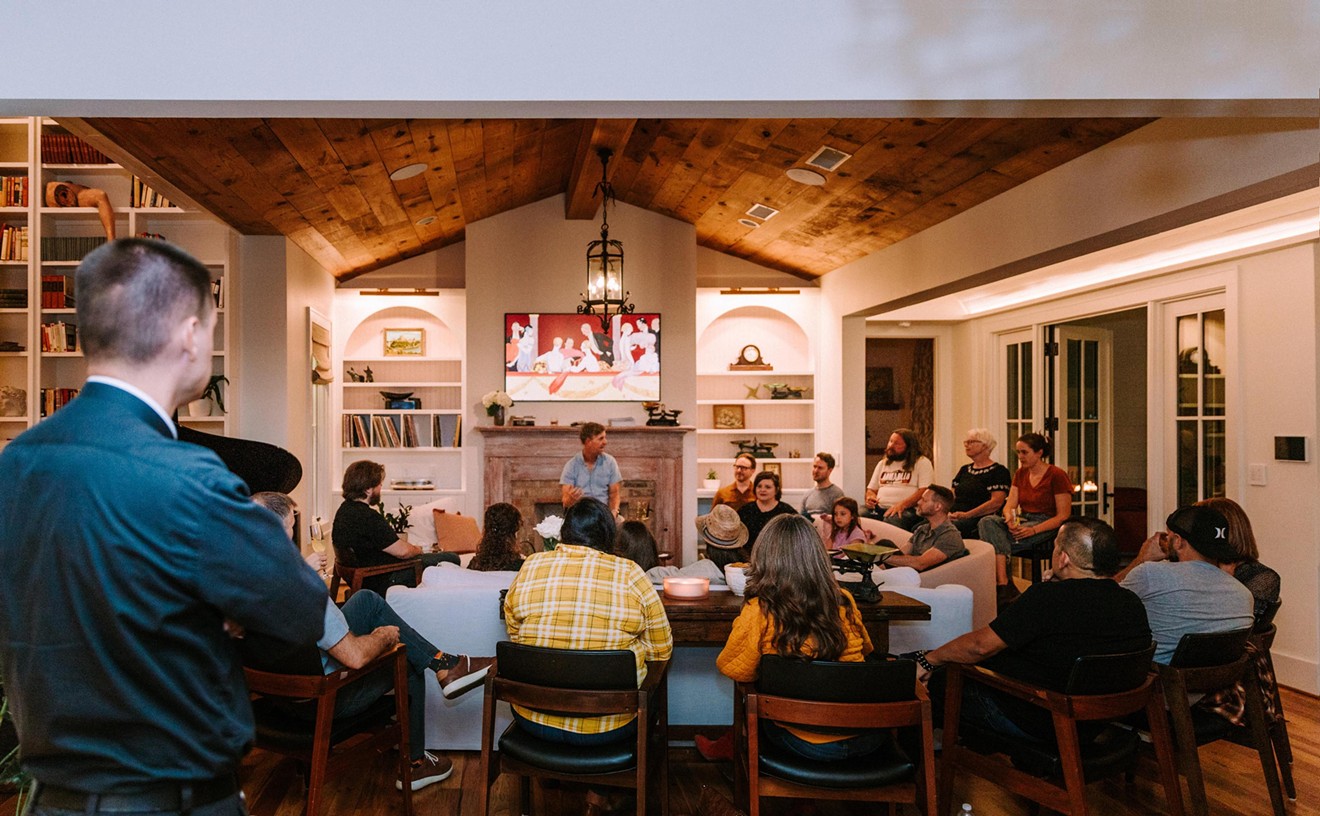Regardless of how long you and this painting interact, it will remain the same. This is one of the wonderful things about paintings. While we watch people change through the years, their portraits suspend their images in time. The magic of traditional artwork is its abstract and static intrusion on our always moving, always changing reality. A new art piece acquired by the Dallas Museum of Art will show us that art doesn't have to be static.
Time-based media is becoming more and more prevalent in the world of contemporary art. The term indicates any film, video or slideshow, and these types of media come with restrictions. We can’t step up to a piece and step away as we wish. Rather, we have to obey the temporal rules that the piece demands. If a film lasts six minutes, we have to spend six minutes with it.
This restriction of time points toward time-based media’s tricky relationship with reality.
“Film and video seem to have a special power to both reflect and distort the world as it is,” says the DMA’s Hoffman Family Senior Curator Anna Katherine Brodbeck. The use of time reminds us of our ordinary temporal passage, giving us a sense of familiarity as we observe a time-based piece. Film and video often capture real life, further grounding the contents of a piece in reality.
“A painting or a sculpture … is assumed to exist ex nihilo,” says Brodbeck — in contrast, we know for certain that a piece of time-based media was created from the world and that it continues to exist in relation to the world’s temporality.
But a piece doesn’t have to directly correspond to reality. It mustn’t have a definite length nor a beginning, middle and end in order to play with time and how it’s viewed. The key is that a time-based piece changes as you look at it.“How do we see what’s beyond our scope? How do we stitch together all the fragments we pick up of a story spinning through cyberspace?” – Emmanuel Van der Auwera
tweet this
This motion is manifest in Belgian artist Emmanuel Van der Auwera’s "VideoSculpture XX (The World’s 6th Sense)," which was newly acquired for the DMA’s contemporary collection and will be in display at the museum in the beginning of 2020. Van der Auwera once studied painting and drawing before practicing animation and film; he didn’t begin making video sculptures until 2014. He characterizes this shift as a move “from creating images to dealing with questions of what that act means in a world already increasingly saturated by them.”
Van der Auwera reflects on time-based media and its place in the world. Part of this reflection means using, and even abusing, modern technology — the creation of "VideoSculpture XX" involved cutting up TV screens with a knife.
The installation combines three panels playing videos that can only be seen through Plexiglass lenses positioned among the panels: as viewers meander through the exhibit, they catch glimpses of surveillance footage from a not-quite-recognizable Las Vegas. As the piece and its viewers waver through time and space, Van der Auwera’s piece doesn't aim to tell a linear story: rather, it throws pieces of stories at us. “How do we see what’s beyond our scope?” asks Van der Auwera. “How do we stitch together all the fragments we pick up of a story spinning through cyberspace?”
In our viewing of most traditional paintings or sculptures, we are capable of seeing the entirety of the work at once. Time-based media such as "VideoSculpture XX" restrict that ability. Even if the entire story exists, we’re incapable of perceiving it as a whole.
Our inability to see the whole of a work is part of what ties time-based media to reality. We as humans are rarely, if ever, able to grasp the entirety of a situation. Given the widespread coverage of today’s media, we often consider ourselves more aware of reality than ever before. Van der Auwera’s work reminds us of our nearsightedness. Through its use of surveillance footage, his sculpture deals with the military and civil rights in America. The viewer’s limited perception of the video footage reflects our limited understanding of these political situations: In trying to see both the artwork and the real situation, we are merely grasping at fragments of stories we don’t fully understand. This in turn lets us ponder the democracy of a nation with a limited perception of itself.
Political and social commentary, however subtle, is an important element of much time-based media. Because of its technological components, it becomes a self-reflexive commentary both of the reality it captures and the method of capture. Older pieces hold onto a piece of technological history and must be maintained (Brodbeck references “tape-based masters” at risk of “becoming obsolete”) — newer pieces redefine what “new” is every day.
The constant development of new technology is always opening new doors for contemporary artwork. Van der Auwera takes advantage of modern technology for his films; two works premiering in Belgium next month “were made using tools easily downloaded to a mobile phone.” Another work at the DMA, Ian Cheng’s "BOB," uses artificial intelligence. Time-based media finds such a welcoming home in the world of contemporary art because it captures the fast-paced developments of the contemporary world. Traditional art calls for stillness and contemplation. Time-based media asks us to please keep up with it.
Watch the video on Emmanuel Van der Auwera's installation, courtesy of Exploredinary:
VideoSculpture XX by Emmanuel Van der Auwera from Exploredinary on Vimeo.











